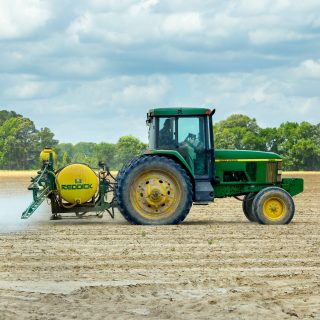
The global autonomous tractor market size was valued at USD 818.4 million in 2021 and is expected to reach a compound annual growth of 23.5% from 2022 to 2030. Farm labor absence, the decreasing arable land and the increasing global population are among the major reasons driving the autonomous tractor market share.
The global autonomous tractor market is rapidly expanding, and it is important for farmers and small and medium-sized enterprises (SMEs) in the agricultural sector to stay up-to-date with the latest trends and insights. In this blog post, we will take a closer look at the current state of the autonomous tractor market and discuss how it can benefit farmers and SMEs.
What are Autonomous Tractors?
Autonomous tractors are self-driving machines that use sensors, GPS, and other technology to navigate and perform various tasks on a farm. These machines are designed to make farming more efficient and productive by reducing the need for human labor and optimizing crop yields.
Market Growth
According to Mordor Intelligence the expected CAGR (Compound Annual Growh Rate) from 2023 to 2028 will grow 26.1%. The increasing demand for food due to population growth, the need to enhance farm efficiency as the arable land is reduced, and the cost-effectiveness of autonomous tractors are some of the key factors driving market growth.
Benefits for Farmers and SMEs
Farmers and SMEs in the agriculture industry can benefit from autonomous tractors in a number of ways. First, by automating operations like tilling, planting, and harvesting, they may drastically lower labor expenses. Farmers may now concentrate on other elements of their business, such as crop management and marketing.
Second, by maximizing planting density and minimizing errors, autonomous tractors can aid in raising crop yields. By offering information on soil quality, moisture content, and other environmental conditions, they can also aid farmers in better managing their resources.
Thirdly, autonomous tractors can improve agricultural safety by lowering the likelihood of mishaps that require human labor. They can run continuously, minimizing the requirement for human labor at night.
Challenges
Despite the numerous advantages of self-driving tractors, there are certain drawbacks to consider. One of the most significant issues is the high initial cost of these technologies, which can be prohibitively expensive for small farmers and SMEs. Furthermore, there are concerns about potential employment losses as a result of the broad use of self-driving tractors.
To summarize, the global autonomous tractor market is positioned for significant expansion in the next years, driven by the agriculture sector’s demand for better efficiency and production. While there are some obstacles to address, the benefits of autonomous tractors for farmers and SMEs are substantial, including lower labor costs, higher agricultural yields, and improved safety. As technology advances, we should expect to see even more innovations that can help farmers and SMEs streamline their operations and increase their profitability.

This project has received funding from the European Union’s Horizon Europe research and innovation programme under grant agreement No. 101070496.